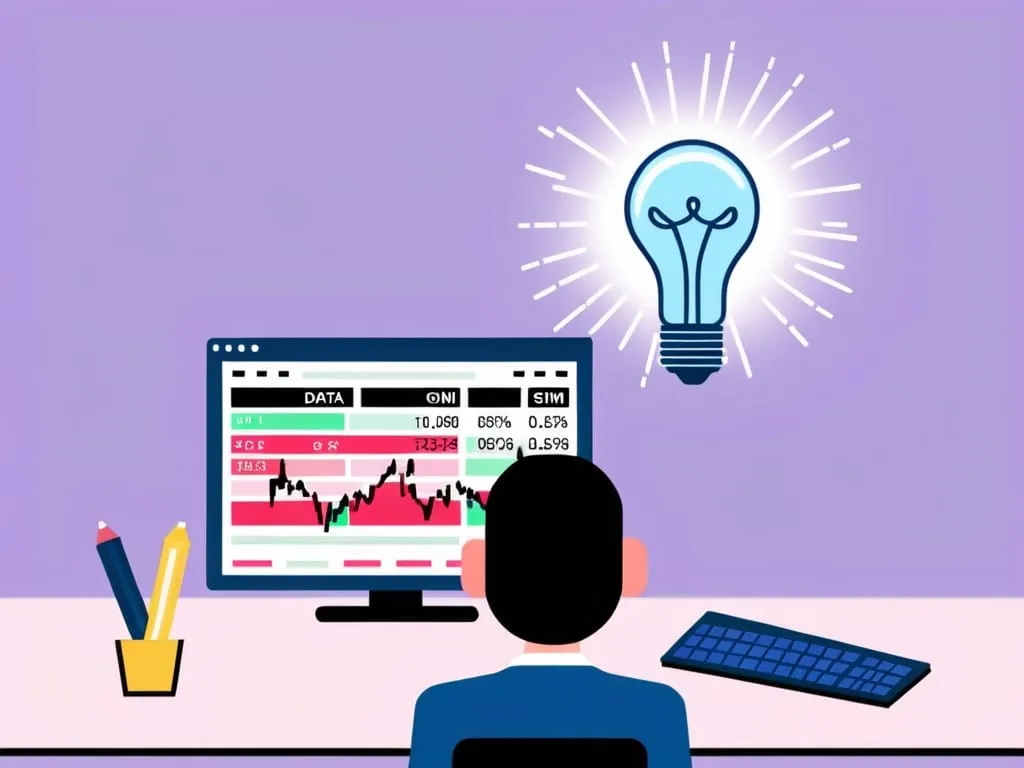In the era of artificial intelligence and machine algorithms, the art of value investing has evolved into a dynamic and intriguing field. As an investor, navigating this landscape can be both challenging and rewarding. Here’s how the classic principles of value investing are being redefined in the age of AI.
The Human Touch in a Digital World
Value investing, a strategy pioneered by Benjamin Graham and David Dodd, is built on the premise of finding undervalued stocks that are trading at significant discounts to their intrinsic value. However, in today’s market, algorithms and AI systems are churning out data at an unprecedented pace. While these tools are invaluable for analyzing vast amounts of information, they often lack the human intuition and emotional intelligence that are crucial for making informed investment decisions.
As I delve into the world of value investing, I find that the best investors are those who can balance the cold logic of data with the warmth of human insight. For instance, legendary investors like Warren Buffett and Seth Klarman have always emphasized the importance of understanding the underlying business and its management, aspects that AI systems may overlook.
Generating Investment Ideas
One of the key challenges in value investing is generating new investment ideas. While AI can sift through thousands of financial statements and market data points, it is the human mind that can spot anomalies and opportunities that machines might miss. I recall a conversation with a seasoned investor who shared how he often finds potential investments by reading industry reports, attending company meetings, and engaging in discussions with other investors. These human interactions provide a depth of understanding that AI alone cannot replicate.
For example, during the early days of the internet, some investors were skeptical about the potential of companies like Amazon and Google. However, those who understood the underlying trends and the vision of these companies were able to make highly profitable investments. This kind of foresight is often beyond the capabilities of AI, which relies on historical data and may not fully grasp the future potential of a company.
Researching Companies
When it comes to researching companies, the combination of human analysis and AI-driven data is unbeatable. AI can quickly analyze financial statements, identify patterns, and flag potential red flags. However, it is the human investor who must interpret this data in the context of the company’s industry, management team, and market position.
I remember a case where an AI system identified a company with exceptionally low debt and high cash reserves, making it appear as a solid value investment. However, upon further human analysis, it was discovered that the company was operating in a highly competitive and declining industry, making its financial health less robust than it initially seemed. This example highlights the importance of combining AI-driven insights with human judgment.
Maintaining Emotional Discipline
Value investing is as much about emotional discipline as it is about analytical skills. The ability to remain calm during market volatility and to avoid making impulsive decisions is crucial. Here, AI systems can provide some support by offering data-driven perspectives that help mitigate emotional biases. However, it is ultimately the human investor who must cultivate the mental and emotional discipline to stick to their investment strategy.
I have seen many investors who, despite having a solid investment plan, succumb to fear or greed during market fluctuations. This is where the wisdom of experienced investors comes into play. For instance, Julian Robertson, a renowned hedge fund manager, has often spoken about the importance of maintaining a long-term perspective and avoiding emotional decisions. This kind of wisdom is something that AI systems, no matter how advanced, cannot replicate.
The Role of AI in Value Investing
While AI is not a replacement for human judgment, it is undoubtedly a powerful tool that can enhance the value investing process. AI can help in several ways: it can quickly process large datasets, identify market inefficiencies, and provide real-time updates on market conditions.
For example, AI can be used to screen for companies that meet specific value investing criteria, such as low price-to-earnings ratios or high dividend yields. It can also help in monitoring portfolio performance and alerting investors to potential risks or opportunities. However, the final decision to invest or divest always rests with the human investor.
Navigating Market Inefficiencies
Market inefficiencies are the lifeblood of value investing. These are situations where the market price of a stock does not reflect its true value. AI can help identify these inefficiencies by analyzing market data and spotting anomalies. However, it is the human investor who must understand the underlying reasons for these inefficiencies and decide whether they present a genuine investment opportunity.
I recall a situation where an AI system identified a stock that was trading at a significant discount to its peers. Upon further analysis, it was discovered that the company was undergoing a restructuring process, which had temporarily depressed its stock price. This was an opportunity that AI alone might have missed, as it required a deep understanding of the company’s situation and the potential for future recovery.
The Future of Value Investing
As AI continues to evolve, it is likely to play an increasingly important role in value investing. However, the core principles of value investing will remain unchanged. The ability to find undervalued stocks, to understand the underlying business, and to maintain emotional discipline will always be essential.
In the future, we can expect to see more sophisticated AI tools that can assist investors in making better decisions. For instance, AI can help in predicting market trends, identifying potential risks, and optimizing portfolio performance. However, the human touch will always be necessary to interpret these insights and make informed investment decisions.
Conclusion
Value investing in the age of AI is a blend of traditional strategies and modern technology. While AI provides the tools to analyze vast amounts of data quickly and efficiently, it is the human investor who must bring intuition, emotional discipline, and a deep understanding of the underlying business to the table.
As I navigate this complex and ever-changing landscape, I am reminded that the best investments are often those that lie just beyond the reach of an algorithm’s cold logic. It is the human touch that turns cold, calculated data into golden opportunities, and it is this combination of human insight and AI-driven data that will continue to drive success in the world of value investing.
In this journey, I have learned that the art of value investing is not just about numbers and data; it is about understanding people, businesses, and markets. It is about having the patience to wait for the right opportunities and the courage to act when others are hesitant. And it is about combining the best of human intuition with the power of modern technology to uncover hidden gems in the market.






